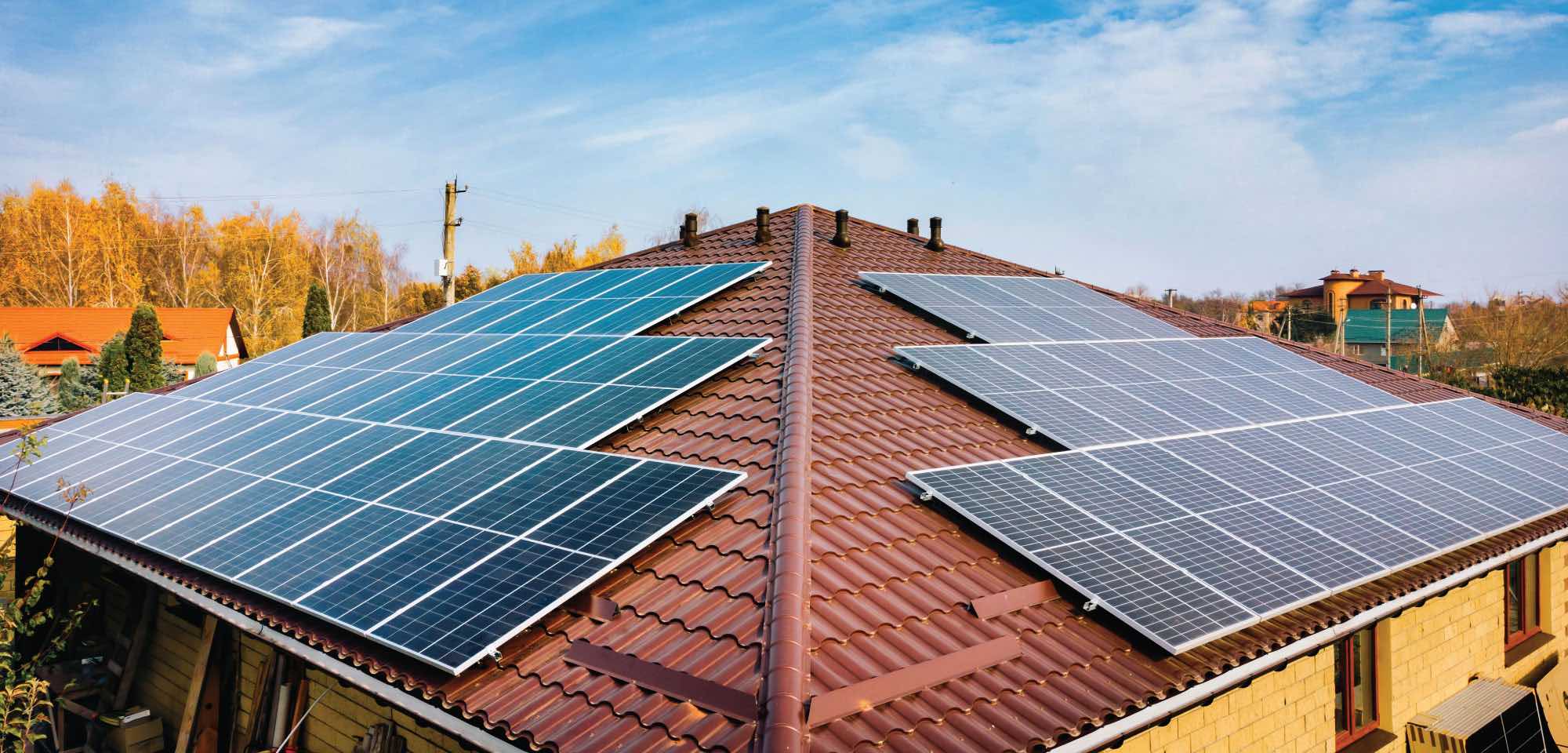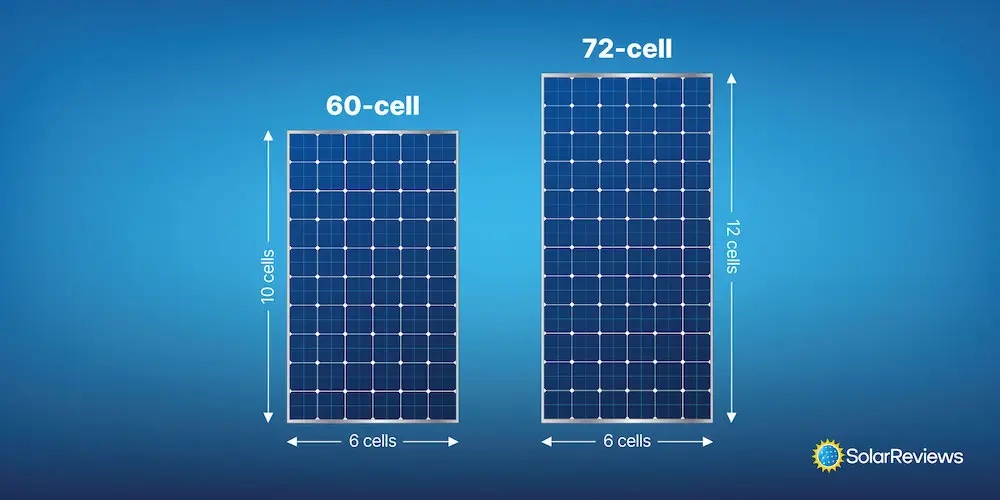
How many solar panels do you need?
500-watt solar panels are bigger than your average solar panel.
Typically made up of 144 half-cut monocrystalline cells, their large size makes 500-watt solar panels more commonly seen in commercial, ground-mounted, and utility solar projects.
For residential solar projects, is bigger always better? That’s not necessarily the case.
Keep reading to find out everything you need to know about 500-watt solar panels and if they’re worth it for home solar.
What is a 500-watt solar panel?
A 500-watt solar panel has a wattage rating of 500 watts under Standard Test Conditions (STC).
STC is an industry standard that involves testing panel performance in a lab under 1,000 lumens/m2 of light, and at a temperature of 77°F (25°C). It indicates the power output you can expect from a solar panel under ideal sunlight and temperature conditions.
And what about real-world output? Typically, a 500 W solar panel will generate about 2 kilowatt-hours (kWh) of daily power and 731 kWh of annual power. Just be aware that actual solar panel power output you will see will vary based on different factors.
In terms of efficiency, all of the 500 W solar panels we examined have module efficiency ratings of around 21%.
You would need twelve 500 W solar panels to build a typical residential system with 6 kilowatts (kW) of solar capacity.
For reference, building an equivalent 6 kW system using standard 375 W modules would require 16 panels.
To find out how many solar panels would be right for your home, use our solar panel calculator below.
Technology used in 500-watt solar panels
A lot of innovative solar technology is utilized to achieve a solar panel rating of 500 watts. Here are two technologies that are commonly used when producing these modules.
1. Half-cut solar cells
All 500 W solar panels we assessed are manufactured with half-cut solar cell technology.
Half-cut solar panels are similar in size to panels with traditional solar cells but produce more power.
When halving traditional solar cells, you also halve their current; this reduces resistive losses, making the half-cut solar cells slightly more efficient.
This new technology provides a more efficient way to produce solar energy from the same surface area. You should not see much of a difference in price between the two cell configurations.
2. Bifacial modules
For most 500-watt solar panels, to achieve their wattage rating they make the panel bifacial.
Bifacial solar panels are double-sided, meaning they can capture sunlight and turn it into electricity from both sides.
Bifacial panels are only practical for ground-mount or utility-scale solar installs. This is because the backside needs to be exposed to sunlight.
For this same reason, bifacial panels are wasteful for rooftop installations, where they would need to be installed flush against the roof.
How big is a 500-watt solar panel? (Cell count and size)
500-watt solar panels are generally made with 144 half-cut monocrystalline cells.
The typical footprint of a single 500 W panel is about 27.5 square feet (7.40 feet x 3.72 feet).
In terms of weight, 500 W panels weigh about 71.2 lbs (32.3 kg) each. That's a lot heavier than the average weight of solar panels of between 40 and 50 pounds.
This heaviness means 500 W panels are better suited for commercial uses.
For a better perspective, let’s compare the size and cell count of residential and commercial solar panels. We’ll use two modules made by solar manufacturer LONGi as examples.
Residential solar panels are solar modules made with 60 solar cells, or its newer equivalent, 120 half-cut cells. These panels typically measure in at around 5.76 feet by 3.41 feet and weigh about 43 lbs. Example: LONGi Hi-MO 4m.
Commercial solar panels are larger modules traditionally made with 72 cells but now made with 144 half-cut cells. These panels have a larger footprint, measuring around 7.40 feet by 3.72 feet in size. Example: LONGi Hi-MO 5m.

What are 500-watt solar panels used for?
500-watt solar panels are designed for larger solar power installations. They can be found in setups such as:
Are 500-watt solar panels worth it for your home?
500-watt solar panels have their place, but it is generally not on the roof of your home. Their size and weight make them less practical to install in most residential solar situations, nor are they cost-effective.
Physical size
The large footprint of 500 W solar panels makes them harder to fit into the nooks and crannies of a residential roof. It’s usually possible to build a solar power system capable of more maximum power by using smaller solar panels, which are easier to arrange and lay out.
Furthermore, the large physical size of 500 W panels makes them difficult to handle, making installation work more challenging.
Performance and price
In terms of performance, 500 W solar panels don’t necessarily offer any advantage.
500 W solar panels are generally no better (or worse) than standard residential panels in terms of efficiency rating, temperature coefficient, or other specifications. They have a higher wattage rating only because they are bigger.
All else equal, you can achieve the same output from a 6 kW system built with twelve 500 W solar panels, as from a 6 kW system made from sixteen 375 W solar panels.
In other words, it’s not the wattage of individual panels that matter, but the wattage of the system as a whole.
In fact, the 6 kW system made with 375 W panels will cost you less money, while getting the same amount of solar power output on your roof.
Summary: Not worth it
500 W solar panels are used mainly on large-scale installations where the panel's physical size doesn't matter. But they’re not ideal for a solar panel system on the roof of your home.
When someone makes a cost-effective 500 W panel in a more reasonably sized 120 half-cell module, sign me up.
What is the best solar panel wattage for your home?
If 500-watt solar panels aren’t right for you, what size panel should you use?
A 350-400 W solar panel is the most popular choice for residential installations. This is because this range offers the best mix of the three most important solar panel factors: size, cost, and efficiency.
Solar companies will generally stock a few different models of panels, and nearly always have at least one panel in the 350-400 W range.
If you are interested in finding out how many solar panels you need, use our solar calculator. It is very accurate as it is based on past solar installations in your area.
It will estimate your recommended system size, monthly electric bill after solar, and estimated savings over 25 years.
After seeing your results, you can choose to get quotes from 1-4 local solar installers.
What panel brands offer 500-watt solar panels?
Our experts created a comprehensive rating system for solar panel brands to find the best solar panels on the market. Many of the top solar panel brands offer 500-watt options; we've listed some of the models below:
Solar brand | Model | Wattage |
|---|---|---|
590 - 605 W | ||
500 W | ||
480 - 505 W | ||
570 W - 590 W | ||
520 W - 550 W |
What is the highest-watt solar panel?
Solar panels are getting higher in wattage with each year. Many companies are crossing the 600-watt mark, and some even inching close to 700 watts with the use of TOPCon solar cells.
Key takeaways
-
500-watt solar panels are designed for larger solar installations.
-
Half-cut cell technology is used in 500-watt panels.
-
These modules have an efficiency rating of around 21%.
-
Most 500-watt panels are no more efficient than leading residential panels; they’re just larger.
Oliver is very passionate about the solar industry. He loves that solar is great for the environment but is also an excellent investment. He has gained hands-on experience working for a solar installation company, which informs his writing about solar. He loves working in the solar industry and hopes that the use of electric cars and other renewable energy sources continues to grow....
Learn more about Oliver Sendy